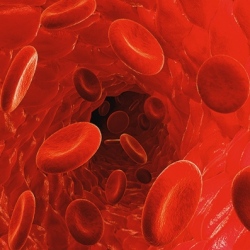
A new technology has promise to safely find buried plastic explosives and maybe even spot fast-growing tumors. The technique involves the clever interplay of microwaves and ultrasound to develop a detector like the Star Trek tricorder.
Stanford electrical engineers have taken the latest step toward developing a tricorder-like (from Star Trek) device through experiments detailed in Applied Physics Letters and presented at the International Ultrasonics Symposium in Taipei, Taiwan.
The work, led by Assistant Professor Amin Arbabian and Research Professor Pierre Khuri-Yakub, grows out of research designed to detect buried plastic explosives, but the researchers said the technology could also provide a new way to detect early stage cancers.
The careful manipulation of two scientific principles drives both the military and medical applications of the Stanford work.
First, all materials expand and contract when stimulated with electromagnetic energy, such as light or microwaves. Second, this expansion and contraction produces ultrasound waves that travel to the surface and can be detected remotely.
The basic principle of this interaction was first revealed in 1880 when Alexander Graham Bell was experimenting with wireless transmission of sound via light beams. Bell used light to make sound emanate from a receiver made of carbon black, which replicated a musical tone.
The Stanford engineers built on the principles demonstrated in Bell’s experiment to develop a device to "hear" hidden objects.
The new work was spurred by a challenge posed by the Defense Advanced Research Projects Agency (DARPA), best known for sponsoring the studies that led to the Internet. DARPA sought to develop a system to detect plastic explosives buried underground, improvised explosive devices (IEDs), that are currently invisible to metal detectors. The task included one important caveat: The detection device could not touch the surface in question, so as not to trigger an explosion.
All materials expand and contract when heated, but not at identical rates. Ground, especially muddy ground soaked with water, absorbs more heat than plastic. In a potential battlefield application, the microwaves would heat the suspect area, causing the muddy ground to expand and thus squeeze the plastic. Pulsing the microwaves would generate a series of ultrasound pressure waves that could be detected and interpreted to disclose the presence of buried plastic explosives.
Sound waves propagate differently in solids than air, with a drastic transmission loss occurring when sound jumps from the solid to air. That’s why, for instance, ultrasound images of babies in utero must be taken through direct contact with the skin.
The Stanford team accommodated for this loss by building capacitive micromachined ultrasonic transducers, or CMUTs, that can specifically discern the weaker ultrasound signals that jumped from the solid, through the air, to the detector.
"What makes the tricorder the Holy Grail of detection devices is that the instrument never touches the subject," Arbabian said. "All the measurements are made though the air, and that’s where we’ve made the biggest strides."
Solving the technical challenges of detecting ultrasound after it left the ground gave the Stanford researchers the experience to take aim at their ultimate goal, using the device in medical applications without touching the skin.
